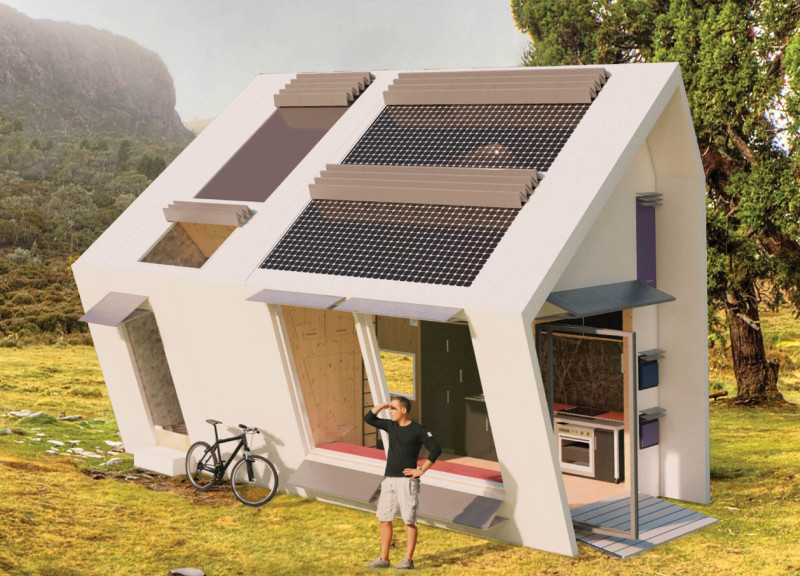5 key facts about this project
The Firehouse is an architectural design that addresses the growing challenge of wildfires, particularly in areas like California and the Amazon. It serves as a safe living space while responding effectively to changing environmental conditions. The structure's design focuses on resilience and adaptability, integrating modern technologies to ensure safety and comfort for its occupants.
Design Concept
The concept centers around the ability of the building to change based on its surroundings. The kinetic facade is engineered to resist extreme temperatures over 1300 °C, protecting against flames and heat. This feature allows the building to function effectively under varying conditions, highlighting its dual role as both shelter and refuge.
Spatial Organization
The layout is carefully structured to define distinct areas for living, sleeping, and bathing, promoting various uses. This configuration supports an efficient flow between spaces, making the home practical for everyday life. The wedge-shaped design directs the building toward the sun, enhancing natural light and warmth while connecting it to the outdoor environment.
Energy Efficiency
A critical element is the roof, which is angled at 37 degrees to maximize solar energy capture. This design choice increases the area available for a solar photovoltaic system. The 5kW Perovskite panels reflect a practical approach to energy independence and environmental responsibility.
Material Selection
Materials are chosen for their ability to enhance safety and durability. The structure includes glulam portal frames and timber framing that comply with safe building standards. Non-combustible wall batts and fire barrier wraps are included to protect against heat and flames. Additionally, breathable non-combustible sarking and fireproof ceramics contribute to a strong external envelope.
A unique aspect of the design is the beehive, placed where it can receive sunlight during the morning. This addition not only supports local bee populations but also plays a role in forest recovery after fires. The thoughtful integration of nature within the design highlights its commitment to environmental sustainability.





















































